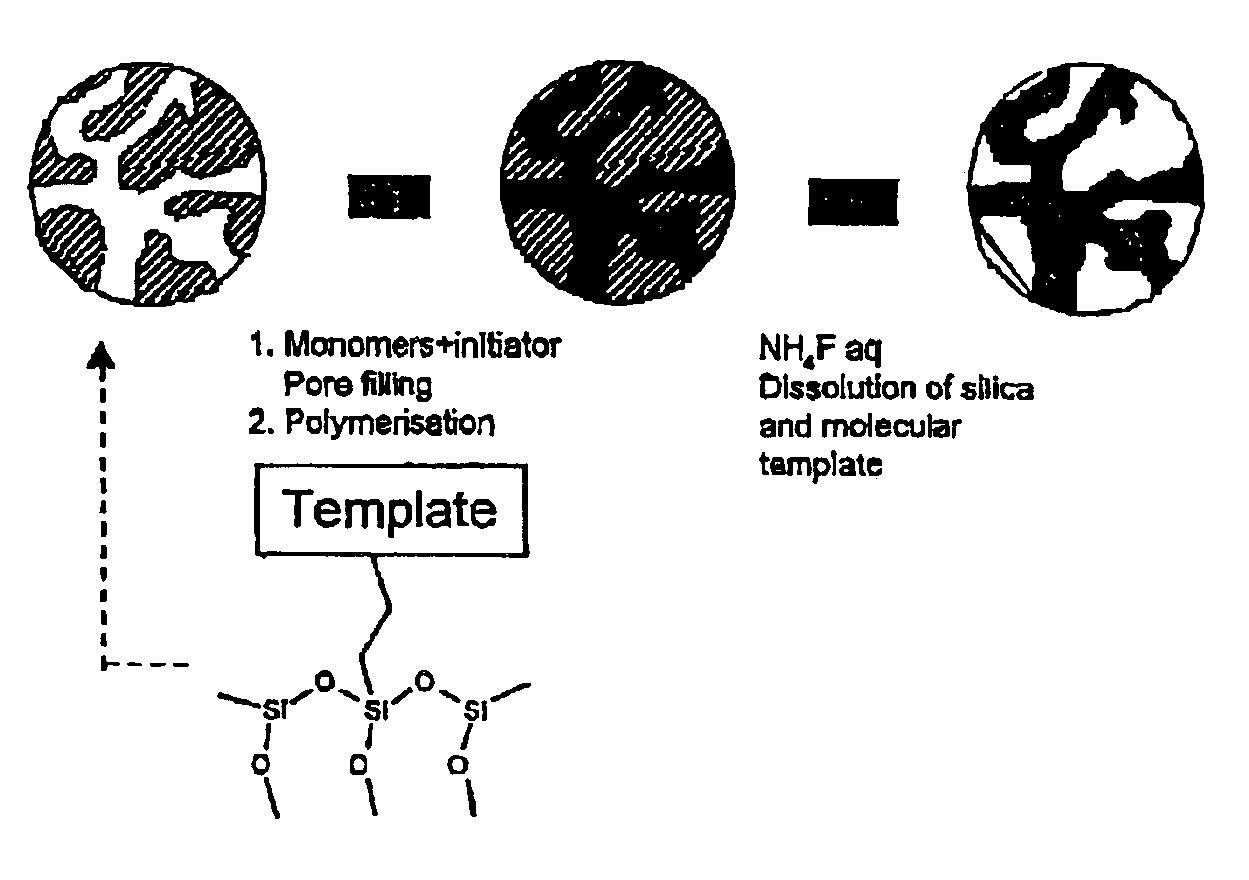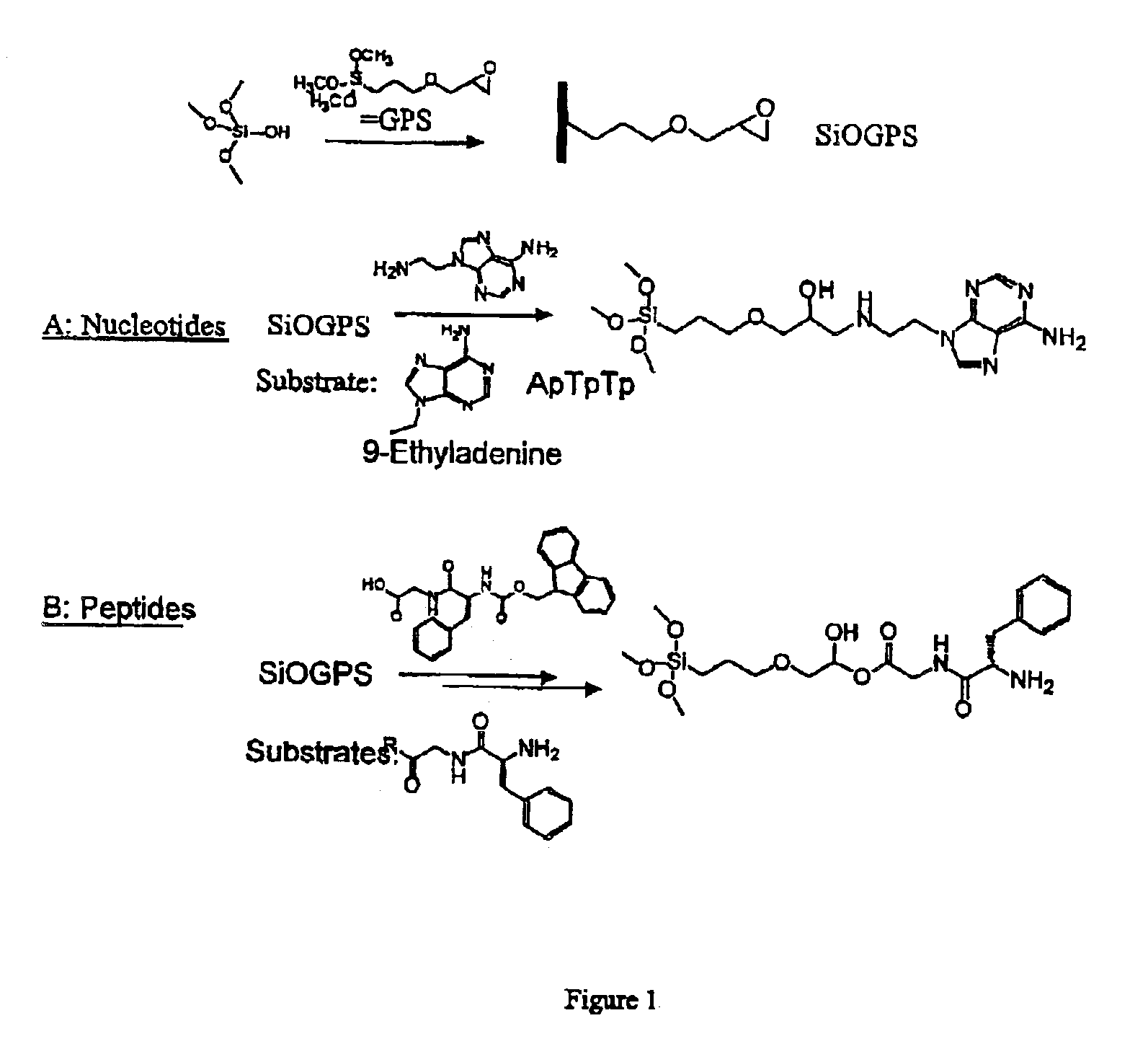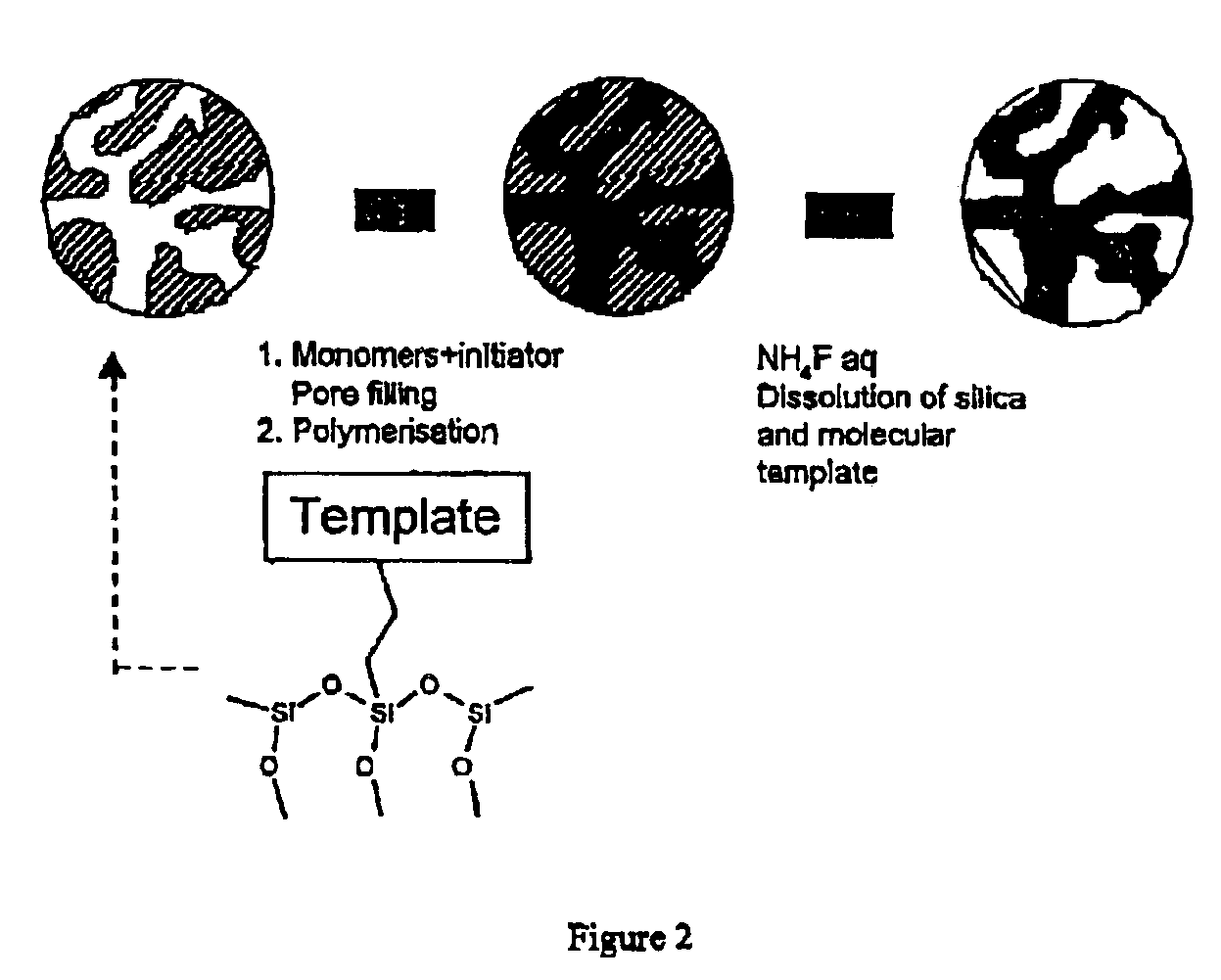Porous, molecularly imprinted polymer and a process for the preparation thereof
a molecular imprinting and polymer technology, applied in the field of new nanostructured materials, can solve the problems of limited chromatographic separation capacity, low load capacity (3 mg/g), complicated preparation process with low yield, etc., and achieve the effect of high-accessible molecular imprinting binding sites
- Summary
- Abstract
- Description
- Claims
- Application Information
AI Technical Summary
Benefits of technology
Problems solved by technology
Method used
Image
Examples
Embodiment Construction
(i). Accomplishment of the Double Template Principle Using Porous Silica Supports
[0058]The techniques used to coat polymers on non porous or macroporous silica gels shall be extended to pore filling of porous silica supports. Thereby serves a porous silica gel as morphological template and a surface bound template molecule as molecular template.
[0059]Porous silica will be used as spherical silica gels. Pore systems of different size and structure are then available through the different techniques to prepare porous spherical silica gels. Than the molecular template, as described in FIG. 1, is bound to the silica surface. Two model systems are available, at which in the first a peptide and in the second a nucleotide are fixed on the surface. Then the pore system of the porous, template modified silica gel is, evacuated and filled with a monomer mixture followed by a polymerization, according to the process of Mallouk. [25].
[0060]Thereafter the silica gel is dissolved using hydrofluor...
PUM
| Property | Measurement | Unit |
|---|---|---|
| pore size | aaaaa | aaaaa |
| particle size | aaaaa | aaaaa |
| particle size | aaaaa | aaaaa |
Abstract
Description
Claims
Application Information
 Login to View More
Login to View More - R&D
- Intellectual Property
- Life Sciences
- Materials
- Tech Scout
- Unparalleled Data Quality
- Higher Quality Content
- 60% Fewer Hallucinations
Browse by: Latest US Patents, China's latest patents, Technical Efficacy Thesaurus, Application Domain, Technology Topic, Popular Technical Reports.
© 2025 PatSnap. All rights reserved.Legal|Privacy policy|Modern Slavery Act Transparency Statement|Sitemap|About US| Contact US: help@patsnap.com



